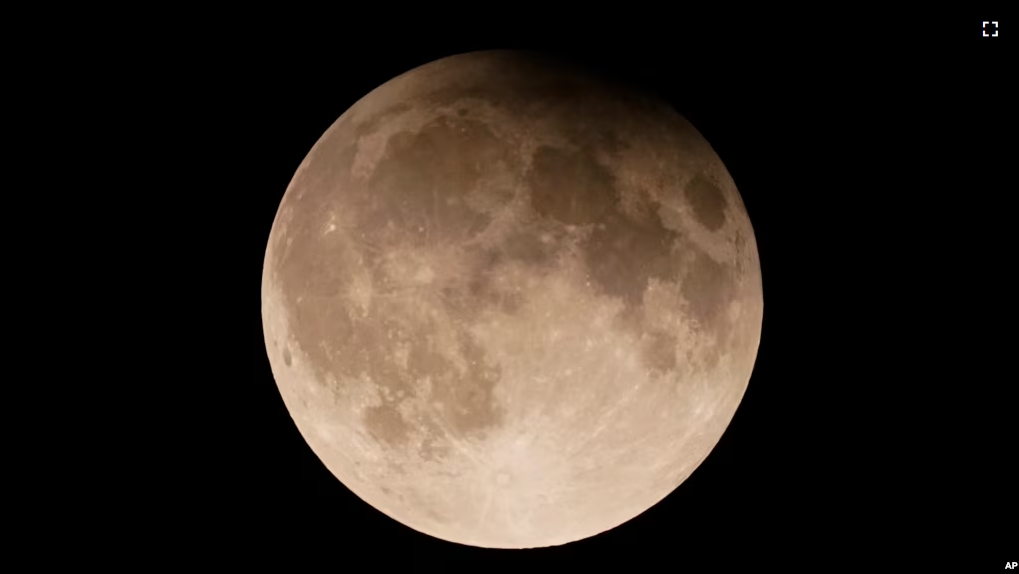An asteroid that moved closer to Earth’s orbit in recent months is now moving away from our planet as gravity pulls it back toward the sun.
The asteroid is small – about 10 meters long – and never presented any threat to Earth. But the object, known as 2024 PT5, was recently pulled closer to our planet by Earth’s gravitational forces.
Scientists sometimes call such objects “mini-moons.” This is because they behave similarly to the permanent moon orbiting Earth when they are captured by gravity. But they are much smaller and stay only temporarily in Earth’s orbit.
The American space agency NASA said it does not consider 2024 PT5 a mini-moon because it was never expected to be fully captured by Earth’s gravity. But NASA has described the small asteroid as “an interesting object” that is worthy of study. Such asteroids are considered near-Earth objects.
The space agency noted that similarities between the asteroid’s motion and that of Earth suggest the object could be a large piece of rock that broke off from the moon’s surface after an asteroid strike in the distant past.
The object was first observed on August 7 by two astronomer brothers from Spain’s Complutense University of Madrid – Carlos de la Fuente Marcos and Raúl de la Fuente Marcos. They identified the asteroid through observations made by a telescope in South Africa.
The Spanish astronomers said it appeared 2024 PT5 is part of a group of near-Earth objects within the Arjuna asteroid belt. They wrote that asteroids in this belt are believed to be “surrounding the path followed by the Earth-moon system.”
The Associated Press reported the astronomers had used telescopes in the Spanish Canary Islands, off the coast of northwestern Africa, to make hundreds of observations. The object is currently more than 3.5 million kilometers from Earth. Only powerful telescopes can see the asteroid because of its small size and low brightness.
The astronomers say 2024 PT5 should head back to Earth in the coming weeks. It is expected to pass as close as 1.8 million kilometers from Earth in January. The moon stays at a distance of about 384,000 kilometers from our planet, NASA explains.
The asteroid will then move farther into the solar system while orbiting the sun. Scientists say the next time the object is expected to make another close move toward Earth is in 2055.
Raul de la Fuente Marcos told the AP that 2024 PT5 was first identified in August and began its move toward Earth in late September. He said the object’s path was similar to the shape of a horseshoe.
De la Fuente Marcos noted that by the time the asteroid returns in January, it will be moving at more than double the speed from September. Current data suggests that during its 2055 visit, it will again make a temporary and partial circle around Earth.
NASA said teams at its Center for Near Earth Object Studies had continually followed the movements of 2024 PT5. It is normal for NASA and its international partners to continuously search the skies for near-Earth objects. Such objects include asteroids and comets that come within 50 million kilometers of Earth’s orbit.
The search system, called ATLAS, involves four different telescopes. Two of them are based in Hawaii. Another operates in Chile and the other sits in South Africa. NASA explains that ATLAS is designed to search the whole sky several times each night looking for moving objects.
The space agency says it will use its large Goldstone Solar System Radar observer – which sits in Barstow, California – to follow 2024 PT5 when it again is pulled toward Earth’s orbit in 2025.
I’m Bryan Lynn.
The Associated Press reported this story. Bryan Lynn adapted the report for VOA Learning English.
__________________________________________
Words in This Story
asteroid – n. a rocky object that goes around the sun like a planet
comet – n. an object in space that leaves a bright line behind it in the sky
